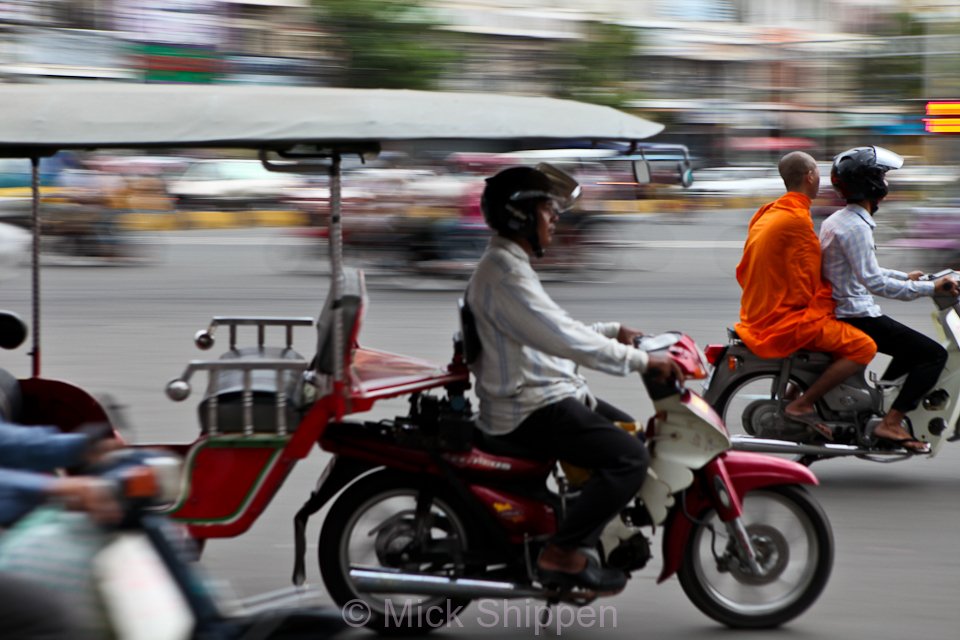Soup Seller, Phnom Penh
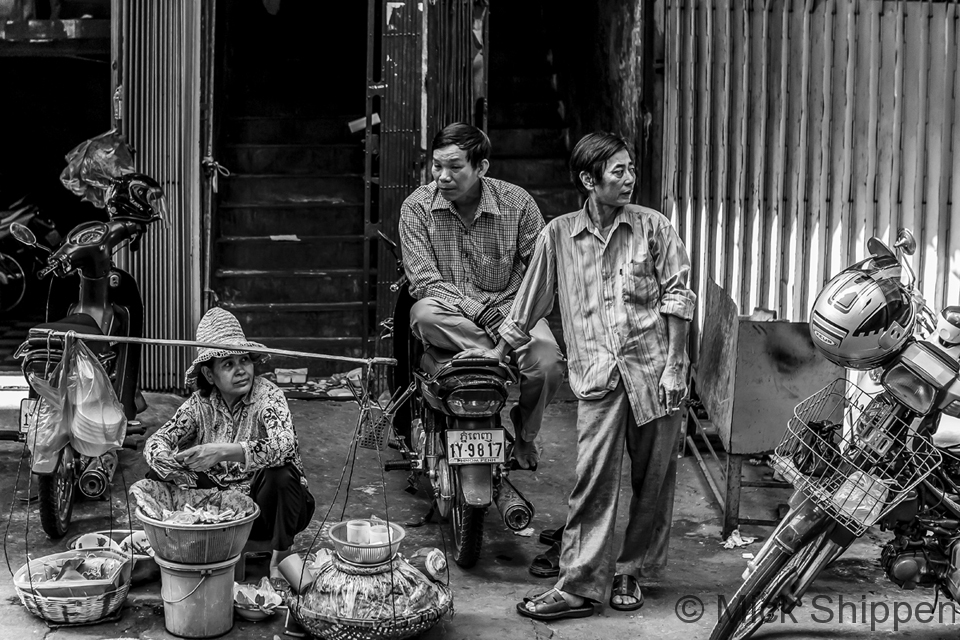
A soup seller with her earthenware pot wrapped in lotus leaves sitting in a side street waiting for customers.
travel photographer & writer

A soup seller with her earthenware pot wrapped in lotus leaves sitting in a side street waiting for customers.
While in Phnom Penh I stayed just around the corner from the Monument of Independence. Flight delays meant that I arrived just as the light was starting to fade. I checked in, threw my bag on the bed and dashed out to take advantage of the ‘blue hour’. I was just in time to catch a couple of long exposures. The next day a crane moved in, fences were erected and workmen started ripping up the marble around the monument for renovation…
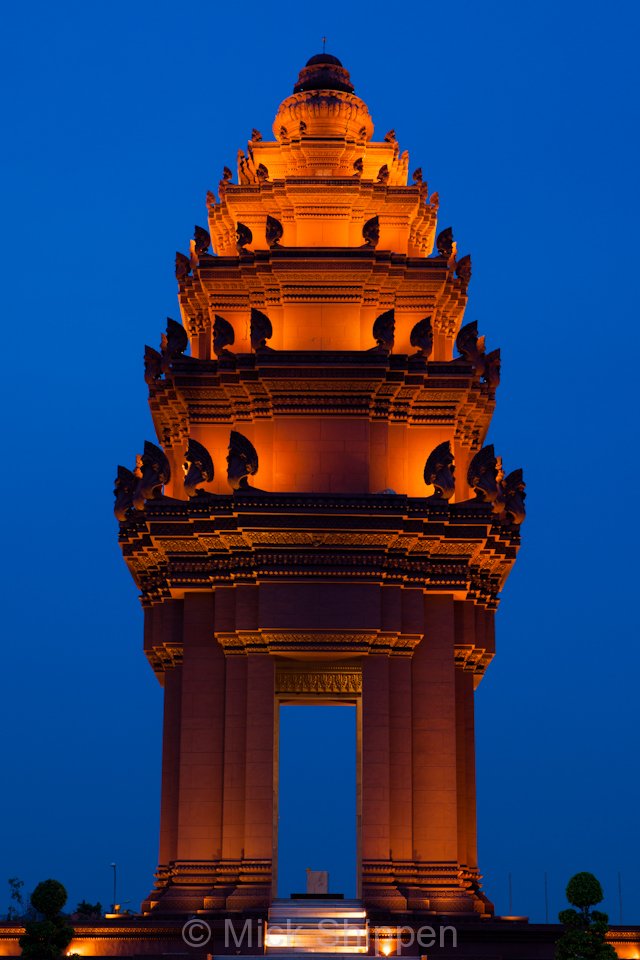
The Monument of Independence is a memorial to Cambodia’s war dead and also commemorates independence from the French which was granted in 1953. The impressive structure acts as a busy traffic circle at the junction of Sihanouk and Norodom boulevards.
The recent flurry of activity of late is because I am flying off to the UK on Friday for an photography exhibition and awards night and won’t be able to post for a while. More on this later.
On a recent trip to Phnom Penh, the capital of Cambodia, I spent a couple of mornings at a school that teaches youngsters the art of classical Khmer dance. Watching the elegant teacher instruct the children was an experience I found much interesting than seeing an actual performance.
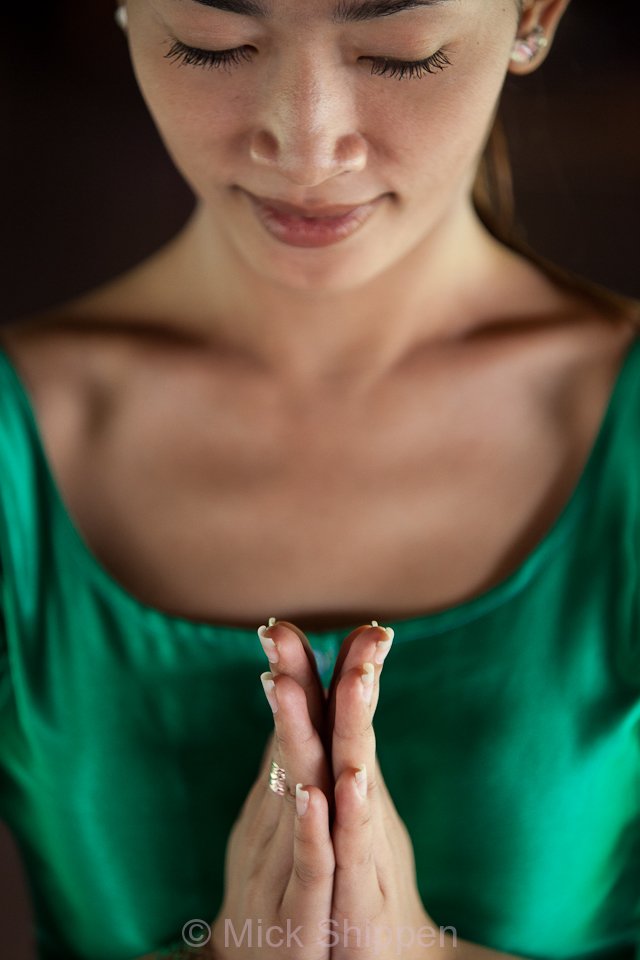
During the Khmer Rouge years, the brutal regime made a concerted effort to wipe out artists and craftsmen, and they almost succeeded. Many of Cambodia’s traditional arts, particularly Cambodian dance, were almost lost forever. Today, following a concerted effort to retrain young people, it is once again being acknowledged for its grace and beauty.
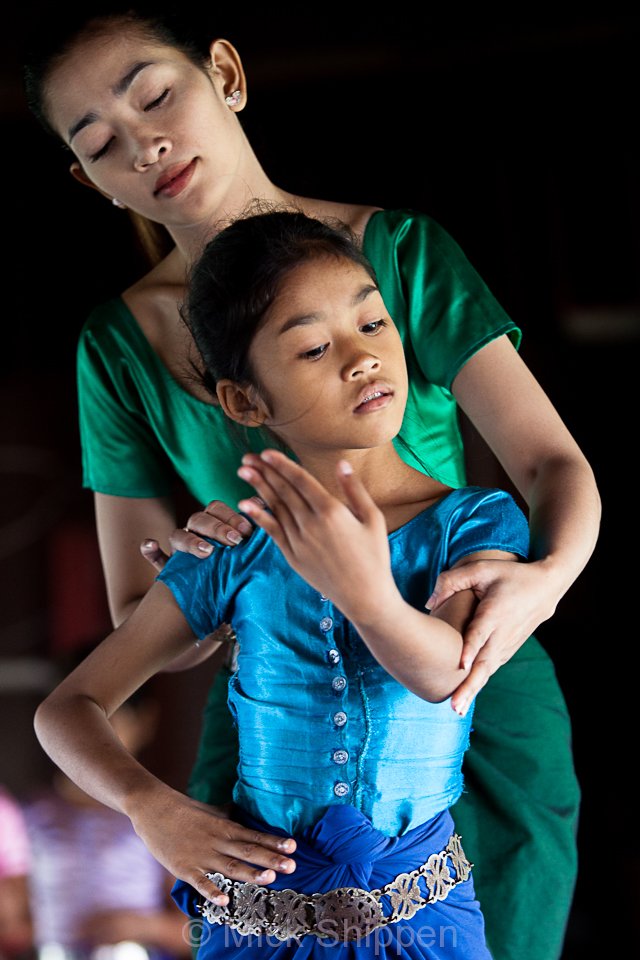
It is thought that 90% of Cambodia’s dancers and musicians were killed during the Khmer Rouge years. The chain of oral traditions passed down from generation to generation by masters of the arts was almost entirely broken. Organisations such as Cambodian Living Arts tracked down a few survivors and employed them to train a new generation of musicians and dancers.
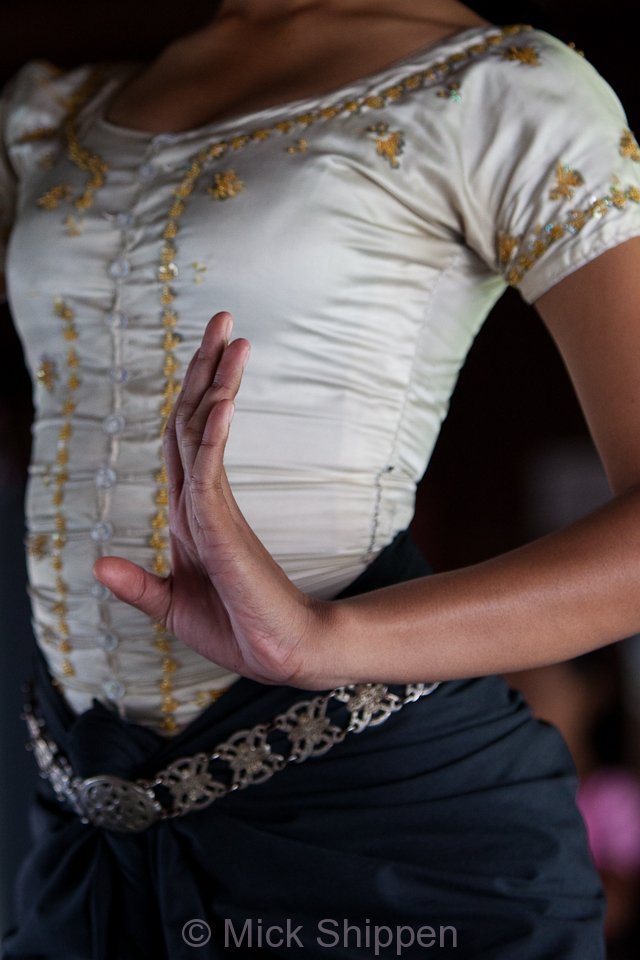
Cambodia classical dance drama is based on the epic poem, Ramayana which has its origins in Indian literature. The dance too draws on the traditions of Indian court dance and is often referred to as Apsara after the female nymphs described in Hindu mythology that were born as dancers to the gods. Images of celestial Apsara dancers dating from the 12th century and earlier can be seen carved on the temples walls at Angkor, evidence that this highly stylized art form has been part of Cambodian culture for centuries.
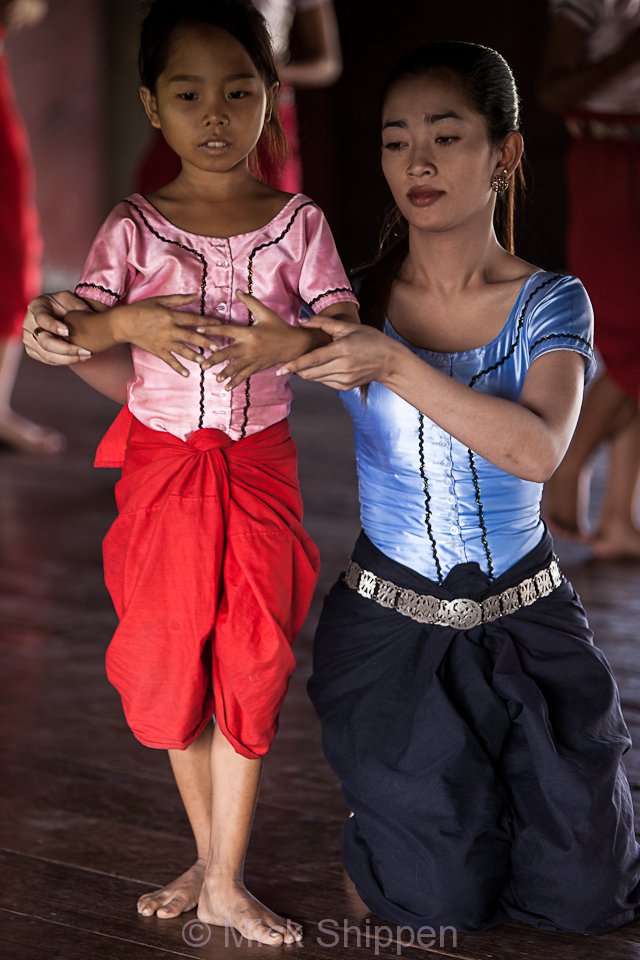
A Cambodian dance troupe, dressed in glittering costumes, elaborate headwear and masks, performs with beauty and grace, their slow movements punctuated by a percussive ensemble that sits to the side of the stage. Acts of the drama are often separated by a narrative read out by one of the musicians.
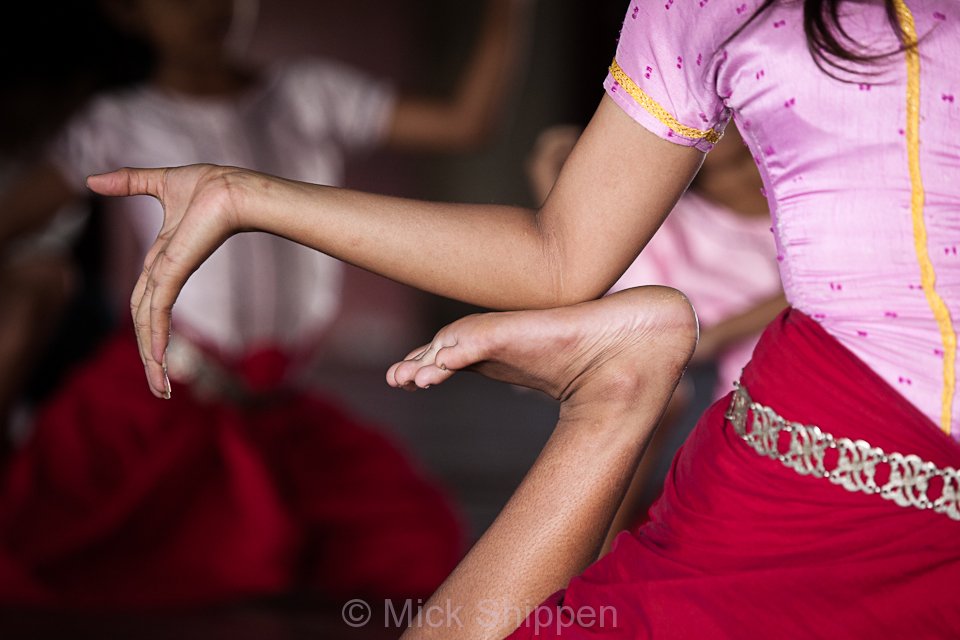
Cambodia’s growing tourism industry has contributed to the revival of traditional dance. In Phnom Penh, regular performances by troupes such as the Children of Bassac can be seen.
It’s all very well having a photo blog but actually getting round to posting is another issue altogether. I realise I have been pretty lax of late but a punishing work schedule means it is all writing and photography but no time to post. So, time to hurriedly get something up before heading off to Chiang Mai for a few days. Or should that be daze. It’s all becoming a bit of a blur.
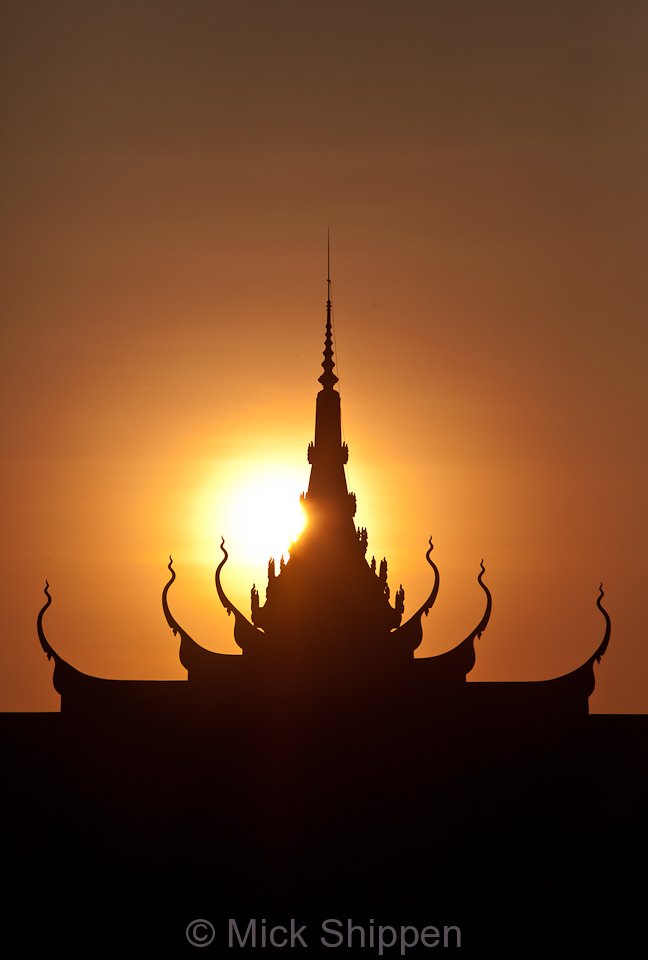
I recently returned from a whirlwind trip to Cambodia, spending a couple of nights in Phnom Penh before heading down to Kampot on the coast.
On my first day in Phnom Penh the sky was white and lifeless; not what my client wanted so I spent a bit of time playing around with silhouettes at sunset in front of the National Museum, a rather striking building in the heart of the city.
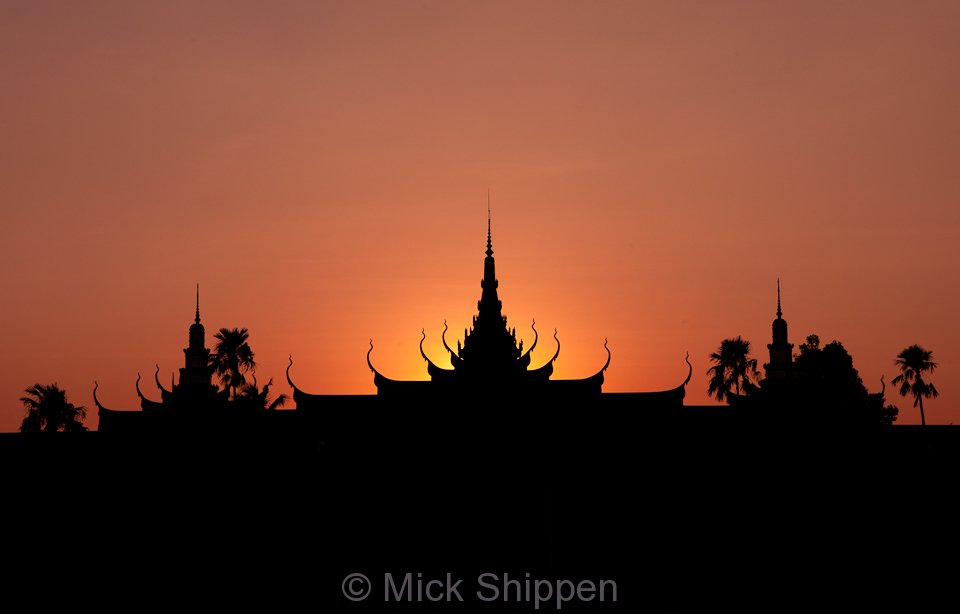
The beautiful red building of the National Museum houses a wonderful collection of over 5,000 ancient Khmer works of art and sculptures. Due to the increase in visiotrs to the country recent years have seen a blossoming of Khmer arts and crafts and the are many boutiques clustered on Street 240 and a host of art galleries close to the National Museum on Street 178, commonly referred to as Art Street.
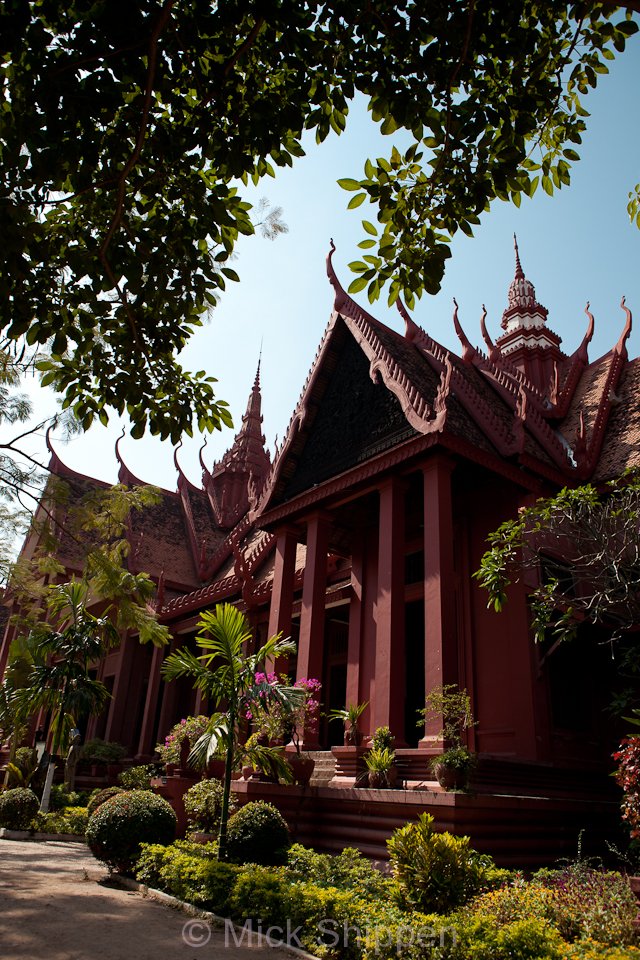
Fortunately the sky was a gloriously blue for the rest of my trip and I got some acceptable shots in Kampot and upon returning to Phnom Penh. I’ll try and post a few more soon.
City, town, or village, one of the first things I do when I arrive is find out the location of the fresh markets. Most places will have one in the morning and evening. These can be held at the same site or different parts of the town. Typically, morning markets open at before daybreak and fizzle out about 10 a.m. Evening markets kick off about 4 p.m. and often trade until late at night but in smaller towns and villages they wind down after dark.
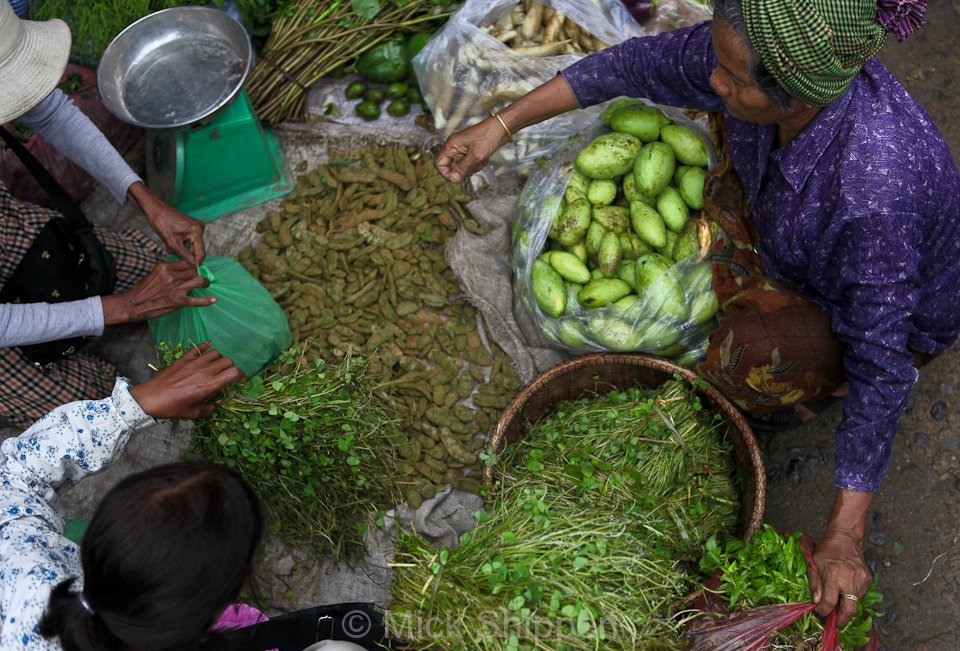
Wholesale markets such as Talad Pak Klong in Bangkok are open 24 hours a day. Some, like a small Laotian market in a rural village have little to offer but are still fertile ground for the photographer.
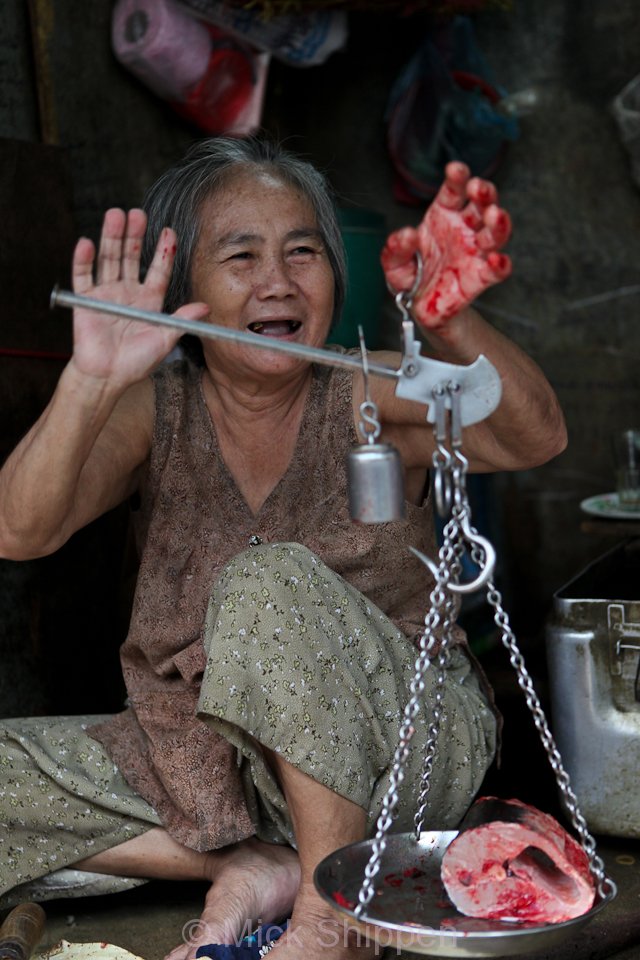
In Phnom Penh there are many sprawling markets to explore. Colourful, chaotic and not for the squeamish, they are the heart of the city. In Khmer, the word for market is phsar.

If you are in Phnom Penh check out the old market, Phsar Chas, which is open throughout the day and in the evening, and Phsar Kandal which is great in the morning. Head over Monivong Bridge and you’ll discover the wonderful Phsar Chhbar Ampoeu.
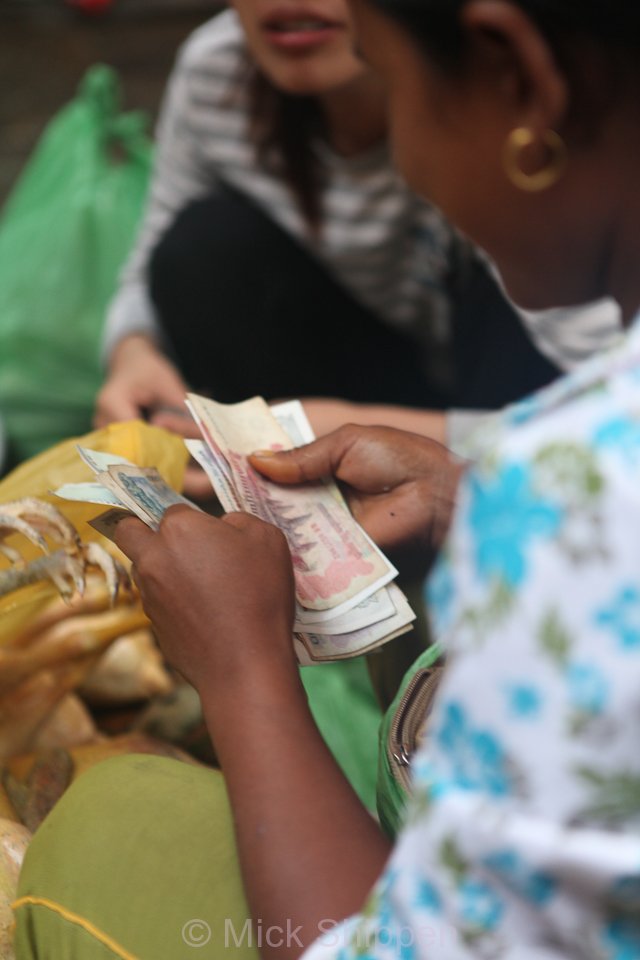
Walk down any street in Phnom Penh and the chances are it won’t be long before you stumble across a shop, stall or mobile vendor selling noodles.
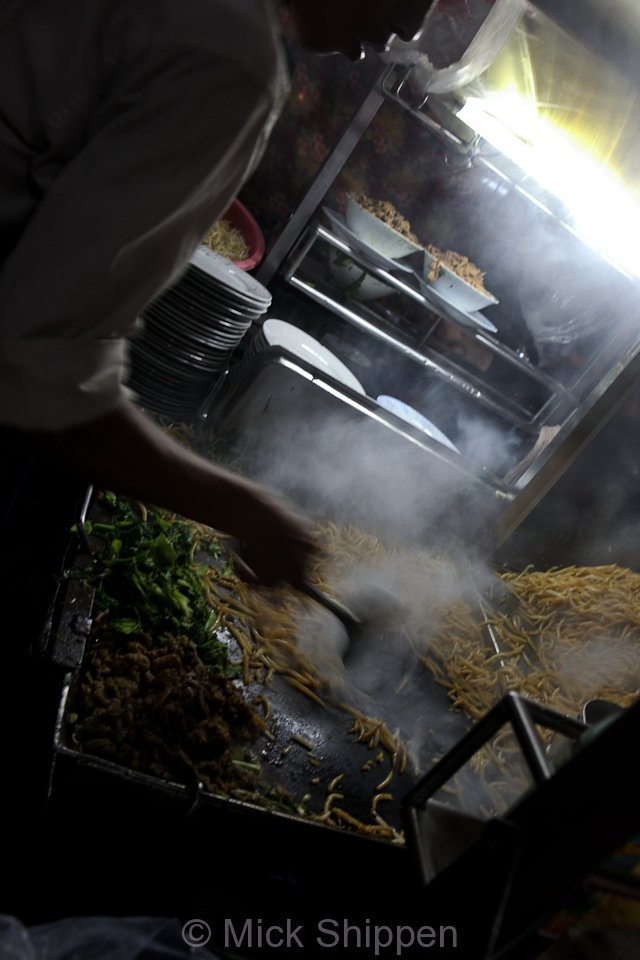
The mainstay of the Khmer diet, noodles provide a quick, nutritious and cheap meal, breakfast, lunch and dinner. Made from wheat or rice flour, they are blanched, fried and fermented to create an overwhelming choice of noodle dishes.
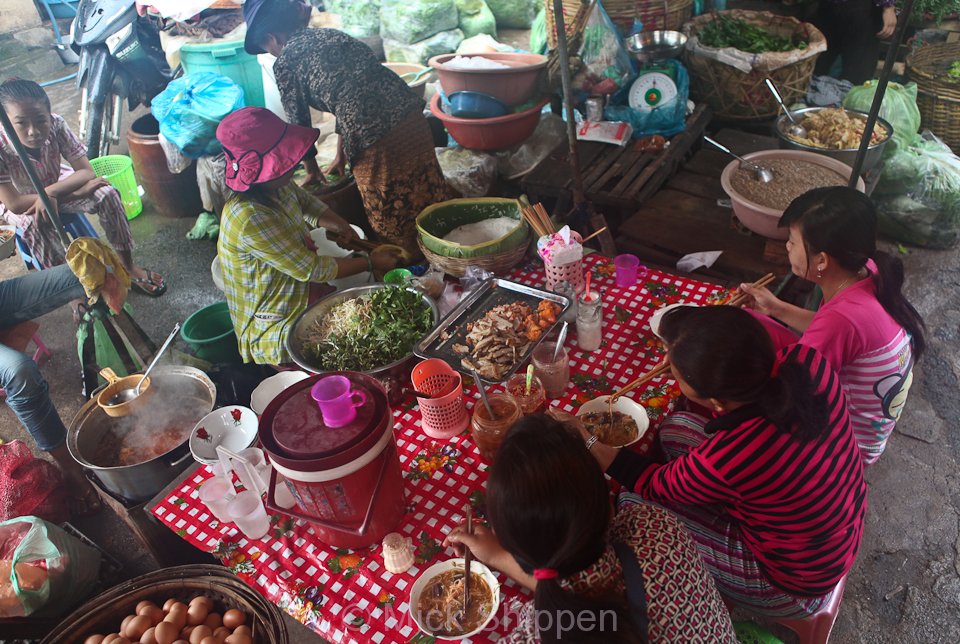
The origin of the humble noodle is of course Chinese, not Khmer, arriving in the country at the beginning of the last century with a wave of immigrants. Many of the noodle shops are still run by descendents of the original Chinese who settled there.
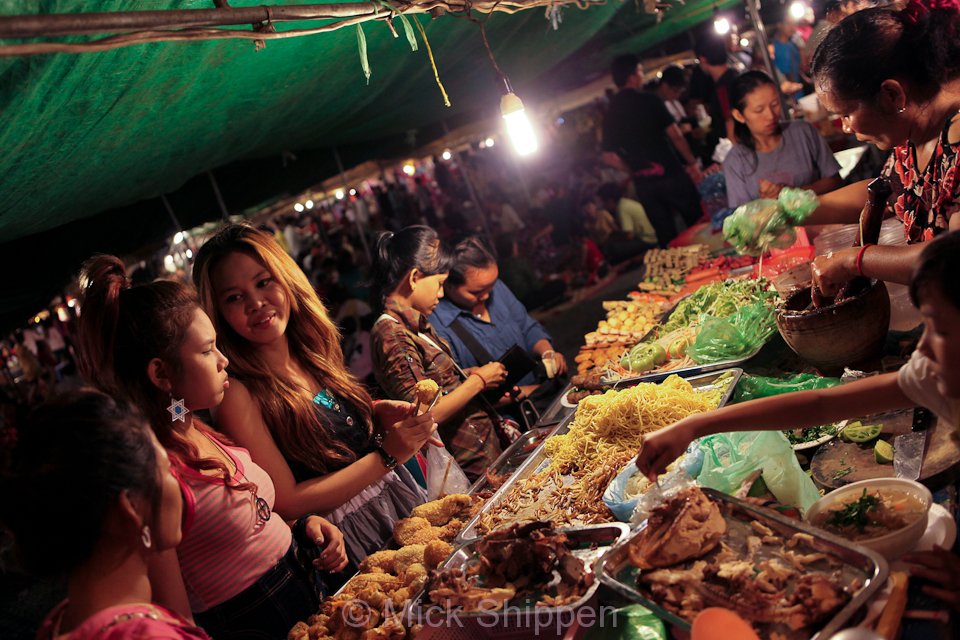
A sizeable Vietnamese population in Cambodia also serves up pho – pronounced fur – their own particular type of beef noodle soup.
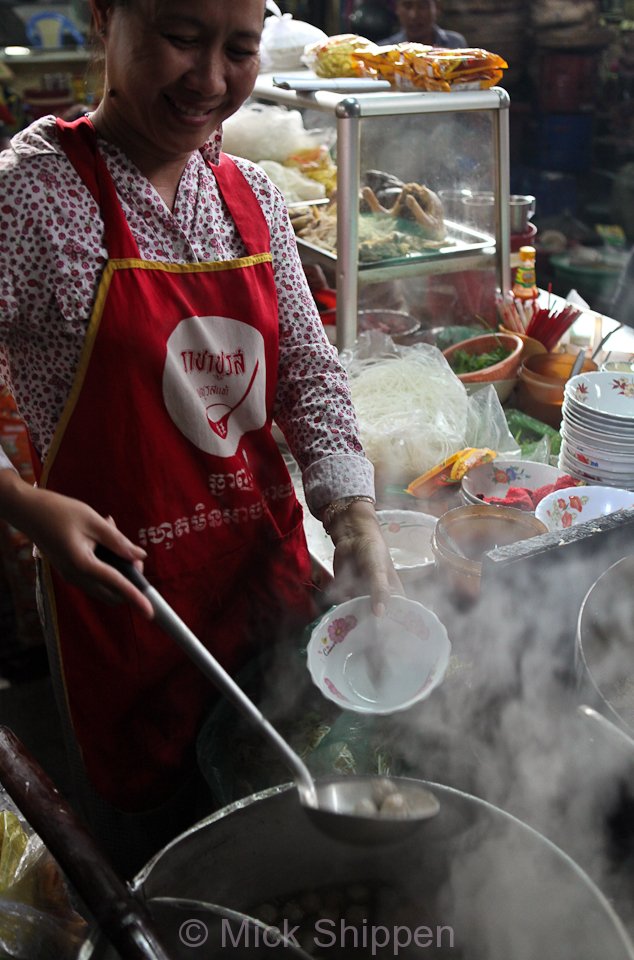
I’ve been based in Thailand for the past 13 years and have travelled extensively in the neighbouring countries of Cambodia, Laos, Myanmar, and Malaysia. There are many similarities in culture, cuisine and lifestyle. And, of course, to someone has lived in and explored the region for so long, it has all become extremely commonplace. Don’t get me wrong, the colour and chaos still excites and inspires, and is fertile ground for a photographer but it seldom surprises any more.
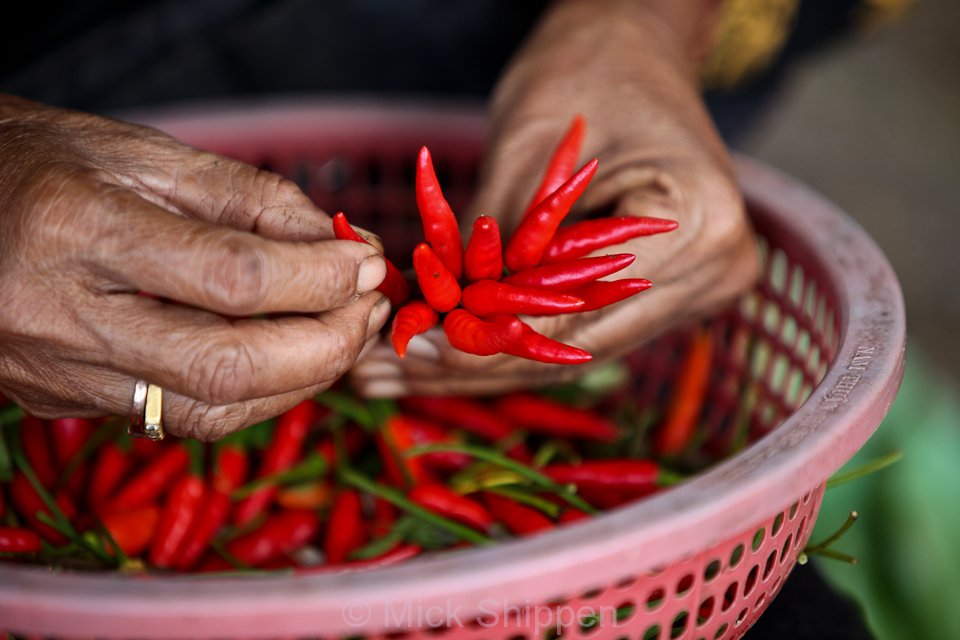
As a writer and a visual artist, I often find myself focusing on detail – picking up on small differences in what is a strikingly familiar environment. On the surface, a walk through a market in Cambodia has much in common with a market in Laos.
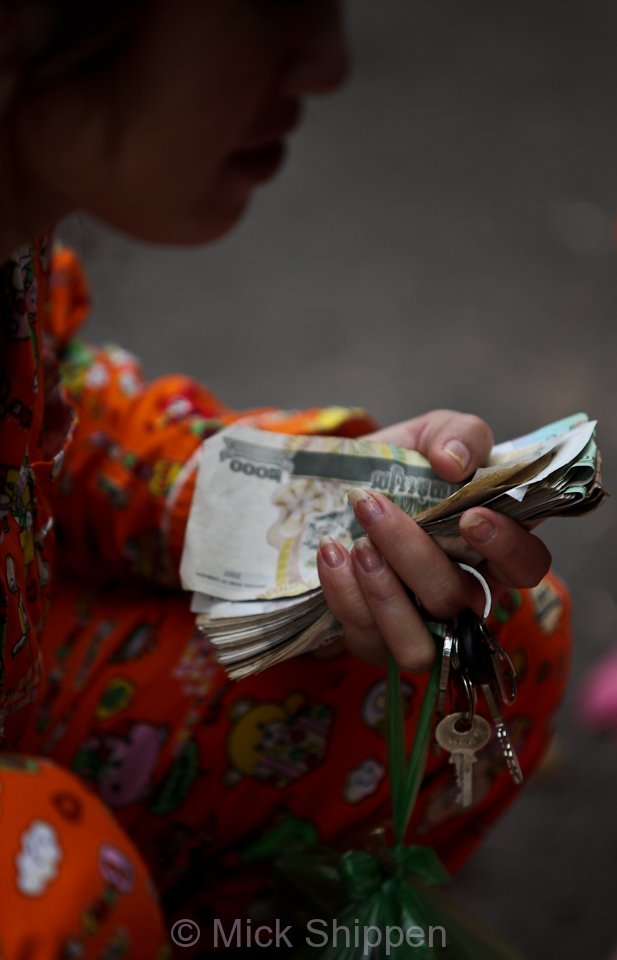
Look closer, however, and the details surface; the way in which Khmer women selling startling red chillies bind them together in small bunches, how they tend to carry a wad of cash in their hand rather than in a purse, or place an offering of a lotus flower and a crisp bill in the hands of a Buddha image at the temple.
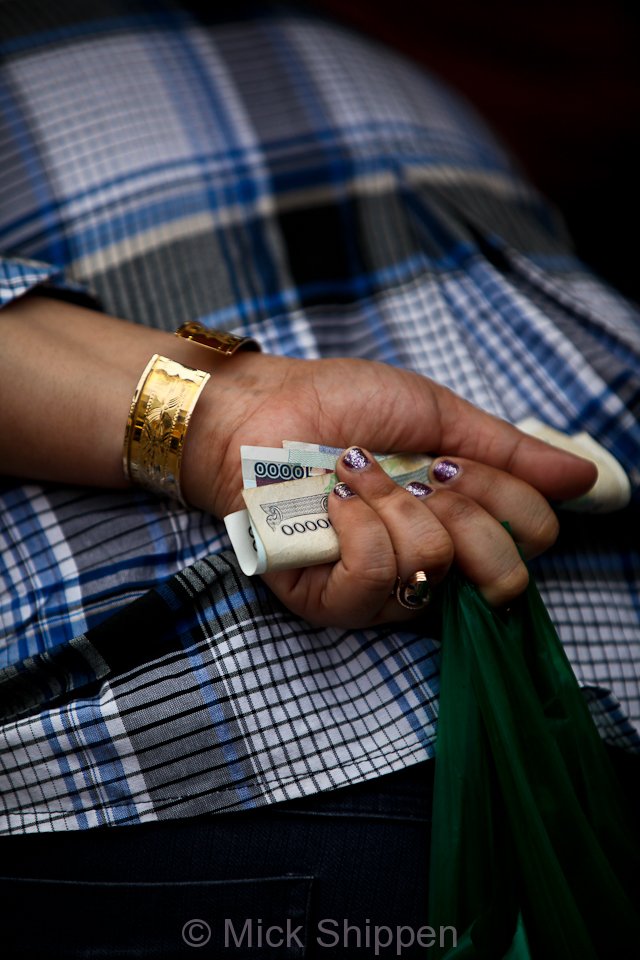
The technique for counting money can also vary from country to country. It’s the idiosyncrasies – the subtle cultural accent – that enliven my day as I amble through a market or explore a temple.
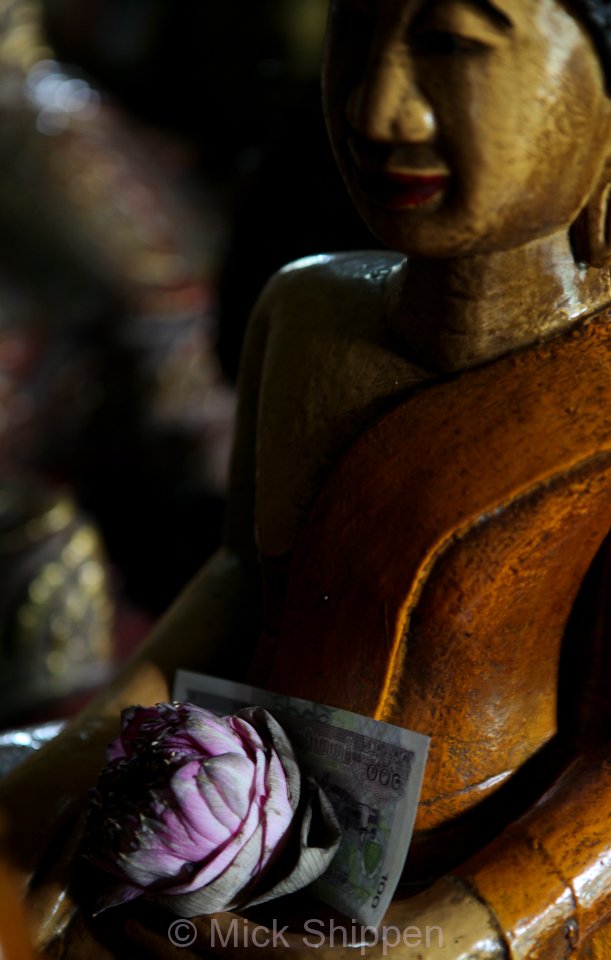
You can find a few more images in the Cambodia Gallery.
It is impossible to mention Cambodia without calling to mind the brutal regime of the Khmer Rouge. Two of the most visited places in Phnom Penh are Camp Cheoung Ek, one of many infamous Killing Fields sites, and Tuol Sleng Genocide Museum, a former high school that became a torture centre known as S-21.
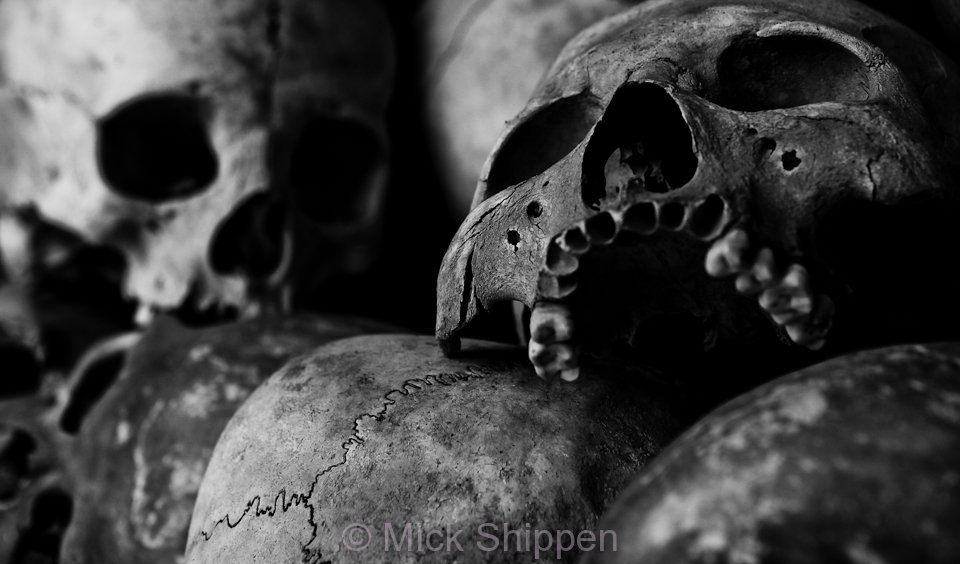
This is the second time I have visited these two places. The experience is deeply disturbing but essential if one is to gain insight into Cambodia’s terrible past. Camp Cheoung Ek lies 15 kilometres southwest of the city and was the burial site for those tortured and killed in S-21. In 1980, 129 mass graves were found here and 8,985 corpses unearthed. Today, a large stupa contains the bones and remnants of clothing as a memorial to the victims.
A visit to Tuol Sleng Genocide Museum is a harrowing experience. Located in a suburb of Phnom Penh, the school building is thought to have seen 20,000 citizens pass through its doors to be tortured and murdered by the Khmer Rouge.
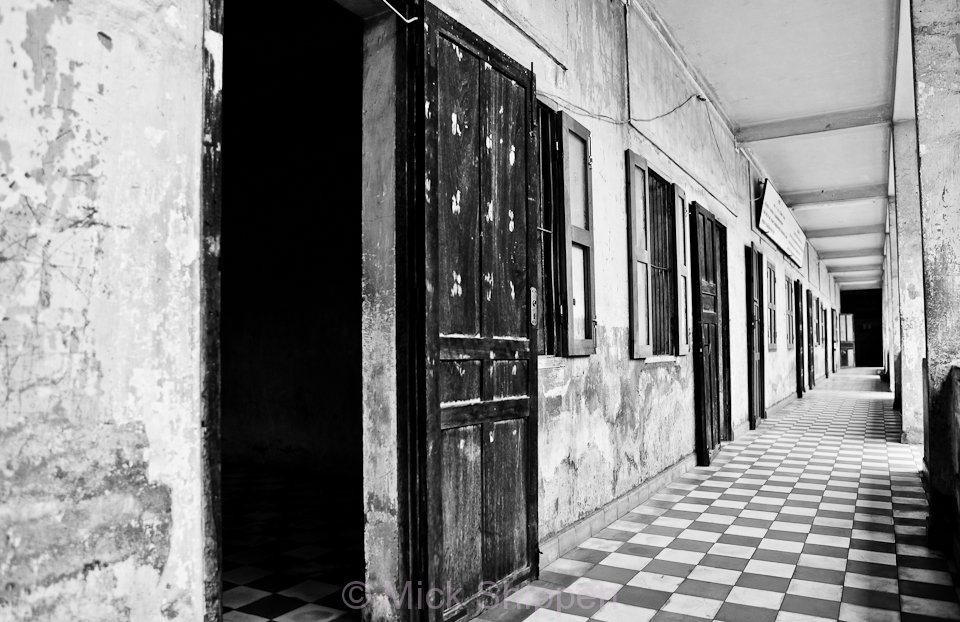
On the ground floor, rooms with a single bed and leg irons where torture was carried out now envelop visitors in an eerie silence; on the upper floors claustrophobic numbered cells are stained with blood.
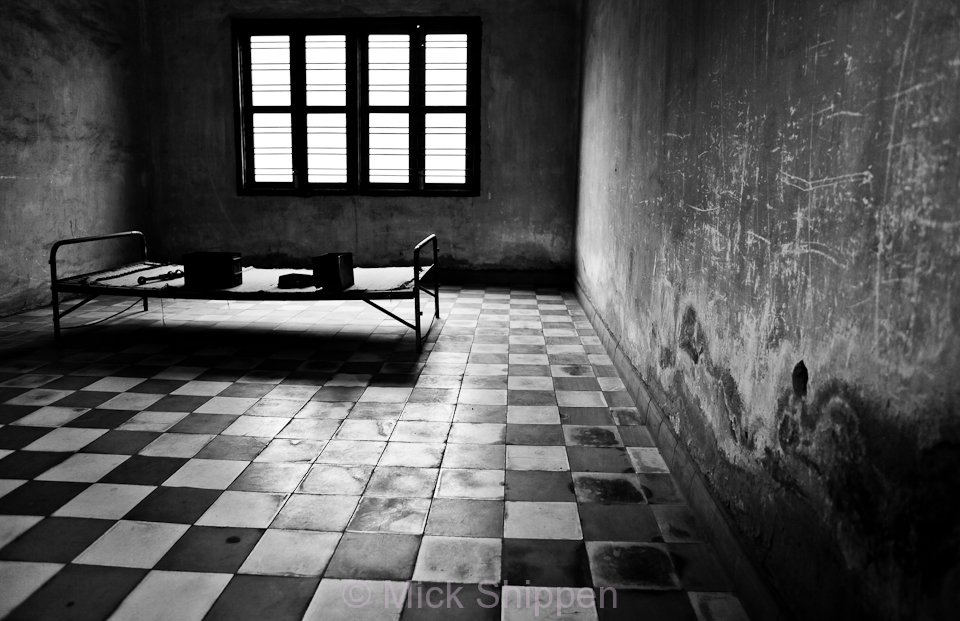
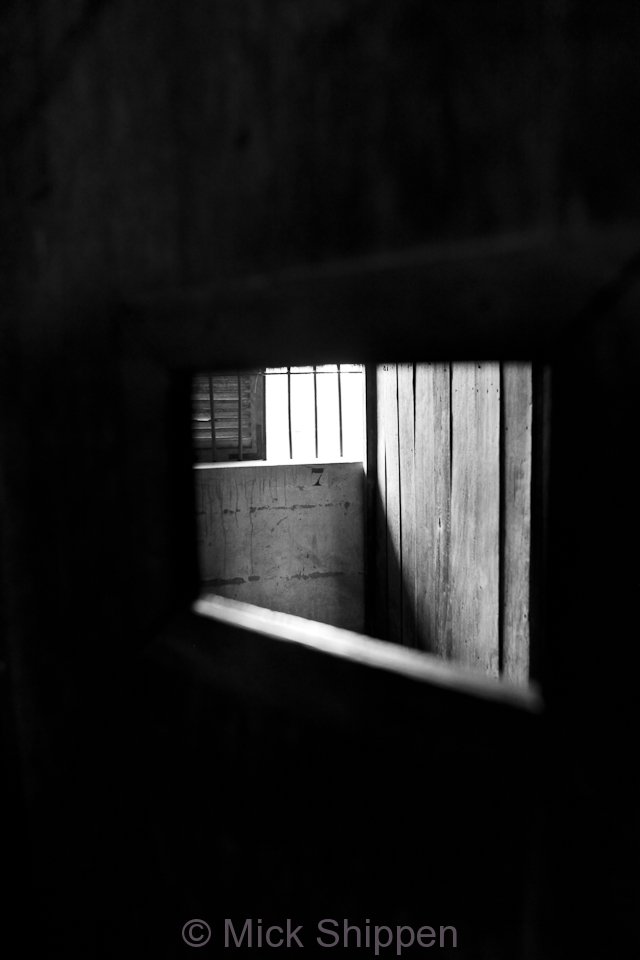
In the courtyard, a makeshift gallows still stands.
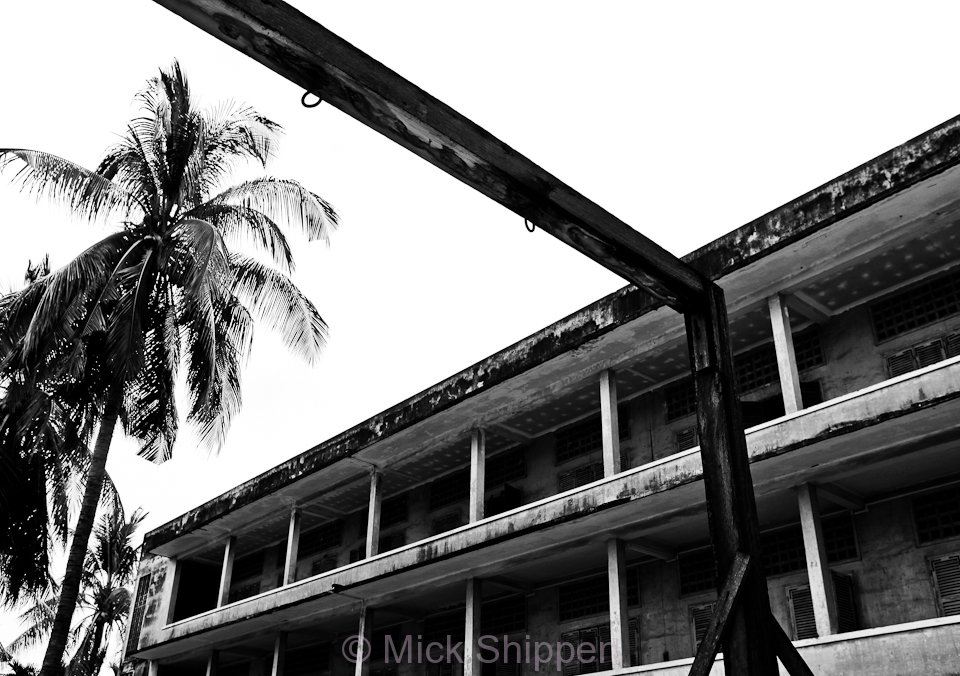
One of the most haunting experiences, however, is looking at the thousands of black and white images of victims displayed on boards throughout the building. Like all regimes that have committed genocide, the Khmer Rouge was meticulous in documenting those it killed.
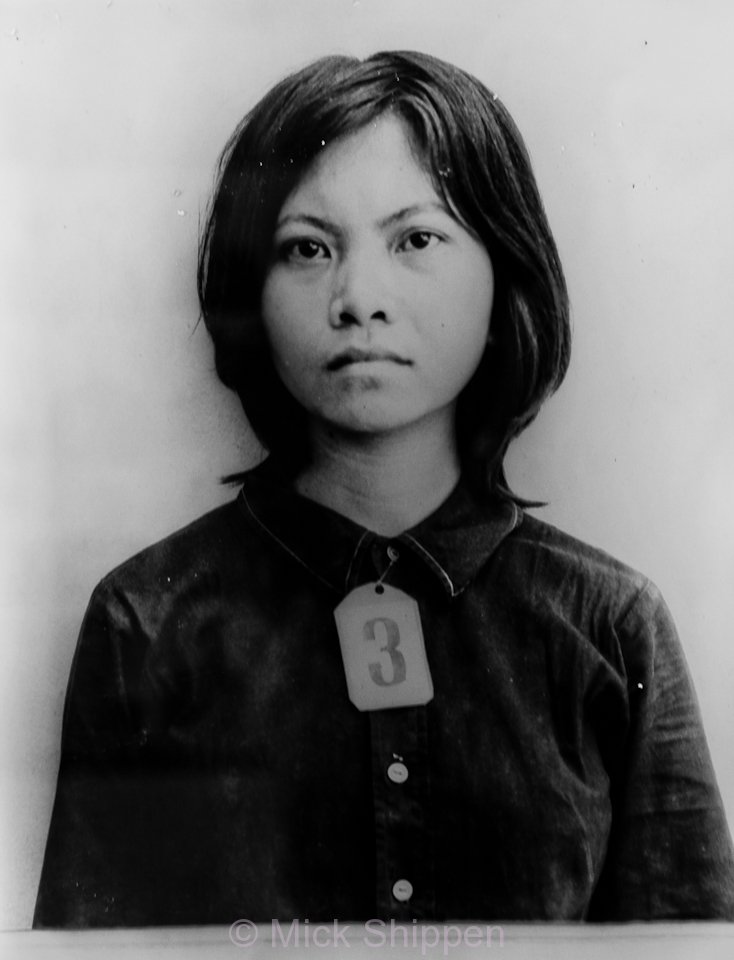
More images can be seen in the Cambodia Gallery.
I have recently returned from a few days in Phnom Penh, the first visit since I was researching my book, the Traditional Ceramics of South East Asia. That was about six years ago, and the city has changed massively. The red dirt roads that once dissected Phnom Penh have been topped with asphalt, the skyline now includes several high-rise buildings, and the population has increased dramatically with rural poor descending on the city in search of work. One of the most striking changes is the huge increase in traffic.
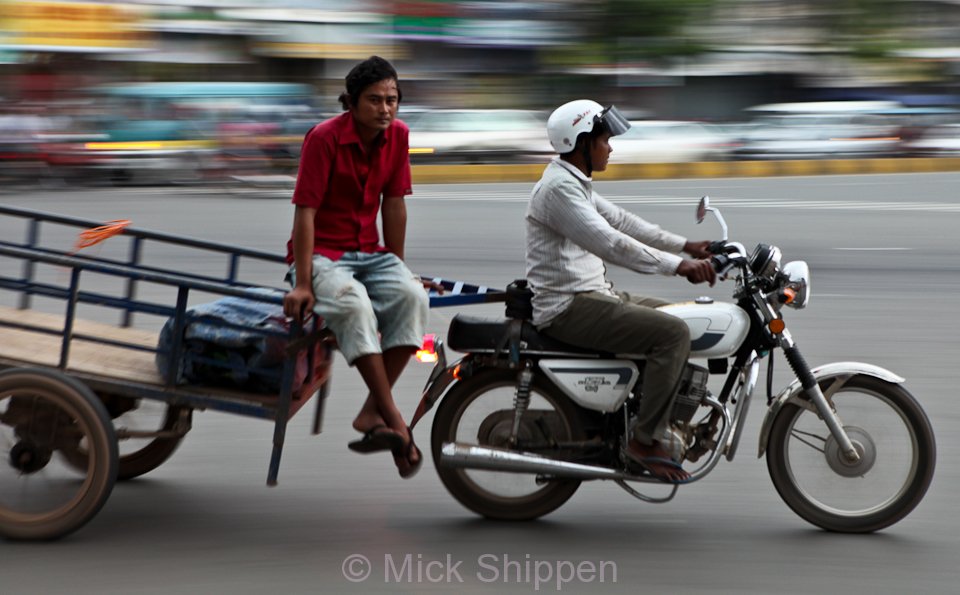
The streets of Phnom Penh are buzzing with swarms of motorcycles, tuk-tuks, brand new four-wheel drives, and the occasional Hummer and Ferrari.
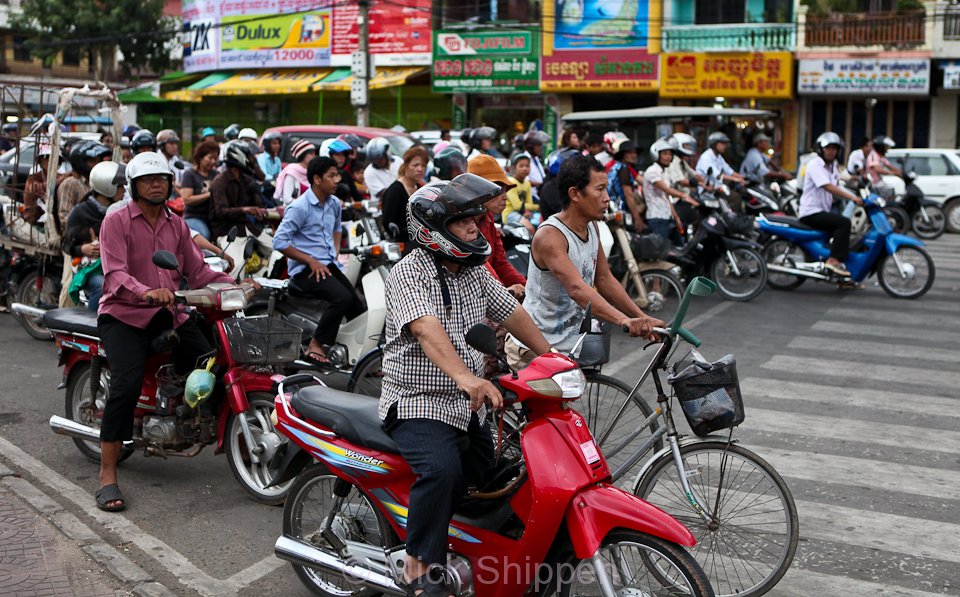
In recent years a small percentage of the population has clearly made a lot of money very quickly, but there is an enormous divide between rich and poor.
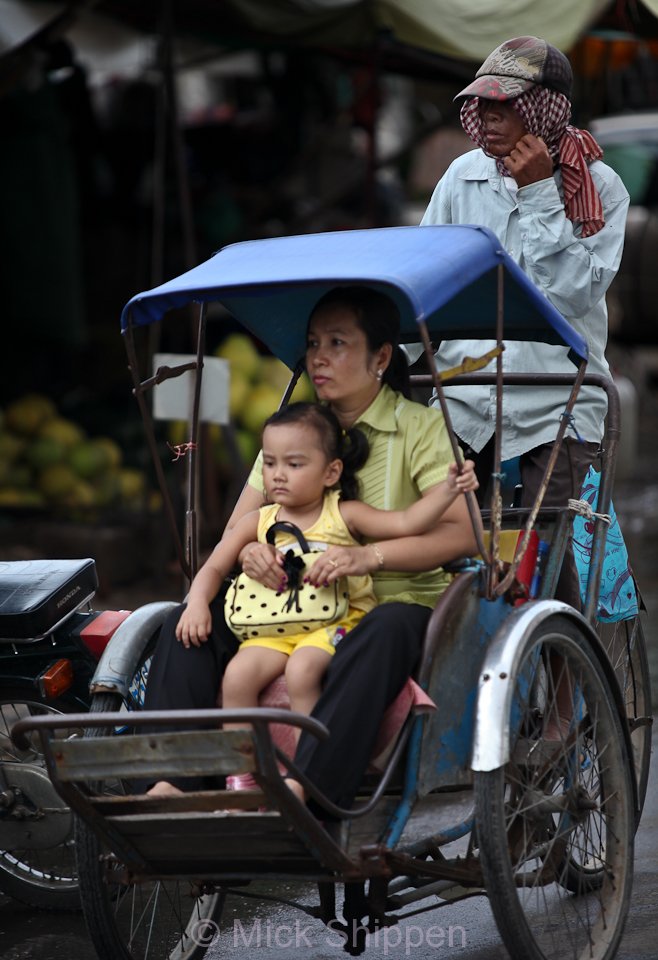
I spent three days exploring the city, revisiting a few sights such as the Killing Fields and Tuol Sleng Genocide Museum, and wandering around vibrant markets, and peaceful temples. Over the next few days there’ll be images on all of the aforementioned topics.
